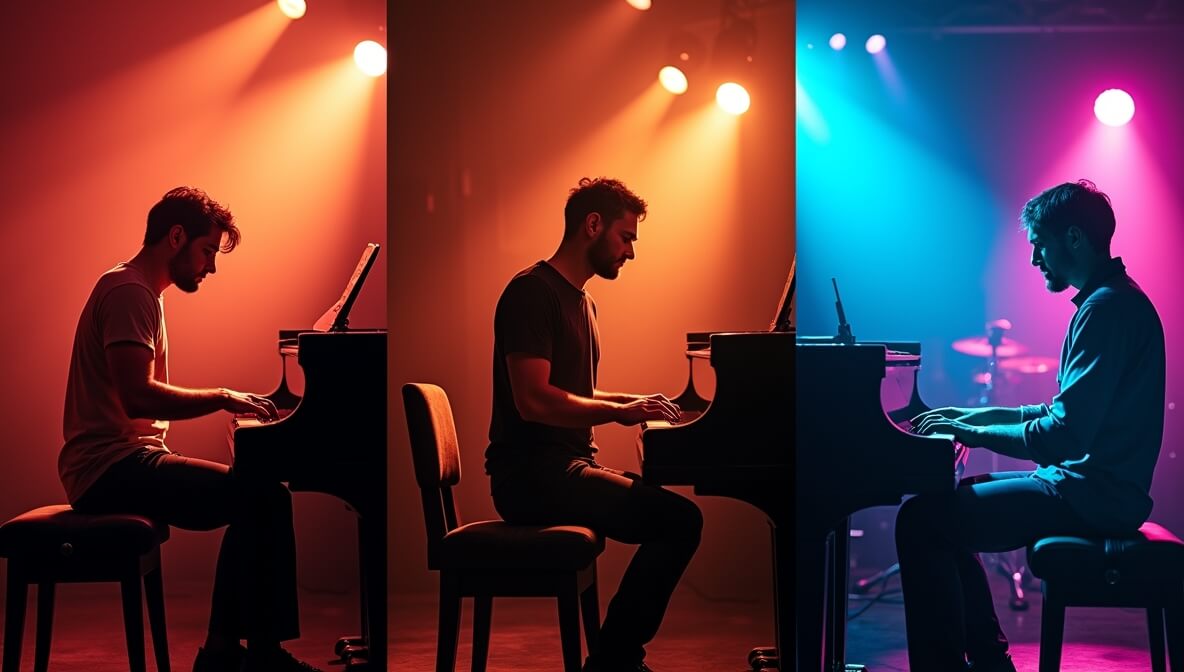Classical, Jazz, or Pop Piano: What is Right for You?

When you start learning the piano, one of the most exciting — and sometimes overwhelming — decisions is choosing the style of music you want to focus on. Should you dive into the structured elegance of Classical, the free-flowing creativity of Jazz, or the catchy familiarity of Pop? Each style offers unique benefits, challenges, and ways to express yourself.
Let’s break it down so you can find your perfect match.
1. Classical Piano – The Foundation of Technique
- Classical music has been the backbone of piano education for centuries. From Bach’s intricate counterpoint to Beethoven’s thunderous symphonies, classical training is renowned for building solid technique, precision, and discipline.
- Why Choose Classical?
- Strong technical skills: You’ll master scales, arpeggios, and complex finger patterns.
- Sight-reading mastery: Classical sheet music will sharpen your reading ability.
- Historical richness: Playing works from composers who shaped music history.
- Who It’s For
- Classical is ideal for learners who want a structured learning path and enjoy analyzing and performing technically demanding music.
- Example pieces for beginners:
- Minuet in G – Bach
- Für Elise – Beethoven
- Clair de Lune (simplified) – Debussy
2. Jazz Piano – Freedom and Improvisation
- Jazz is the art of making music in the moment. It’s fluid, unpredictable, and highly personal. With syncopated rhythms, complex harmonies, and improvisation, jazz pianists aren’t just reading notes — they’re telling stories.
- Why Choose Jazz?
- Improvisation skills: You’ll learn to create your own melodies on the spot.
- Rich harmonic vocabulary: Explore extended chords and unique progressions.
- Personal style: Jazz encourages self-expression over strict rules.
- Who It’s For
- If you love experimenting, hate playing the same thing twice, and want to collaborate with other musicians, jazz might be your playground.
- Example pieces for beginners:
- Autumn Leaves
- Blue Monk – Thelonious Monk
- Take the “A” Train – Duke Ellington
3. Pop Piano – Accessible and Crowd-Pleasing
- Pop piano is about connecting with people instantly. You’ll learn chord progressions, rhythmic patterns, and arrangements that make songs instantly recognizable — whether you’re playing Ed Sheeran, Adele, or Elton John.
- Why Choose Pop?
- Quick gratification: Learn recognizable songs faster.
- Performance-ready: Perfect for parties, gigs, and social media covers.
- Creative arranging: Adapt popular tunes into your own style.
- Who It’s For
- If you enjoy playing modern hits, want to sing while playing, or dream of posting covers online, pop is your best fit.
- Example pieces for beginners:
- Someone Like You – Adele
- Perfect – Ed Sheeran
- Let It Be – The Beatles
Making Your Choice
- There’s no rule saying you must stick to just one style. Many pianists blend elements from each — classical technique for accuracy, jazz theory for creativity, and pop sensibilities for audience engagement.
- If you’re undecided:
- Start with classical basics to build solid skills.
- Explore jazz theory for harmonic knowledge.
- Add pop songs to keep practice sessions fun.
- Pro Tip: Whichever style you choose, consistency is more important than style. A solid practice routine will get you farther than jumping between genres without focus.
